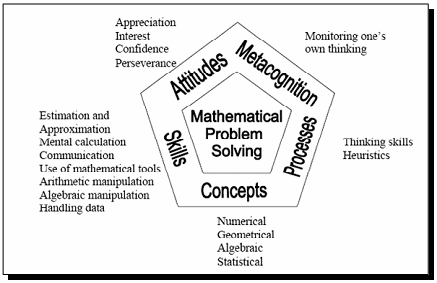Singapore math - some research on its strengths
By Murray Bourne, 22 Jun 2008
There is some interesting research from the American Institutes for Research on the Singapore math system.
The 2005 study "What the United States Can Learn From Singapore’s World-Class Mathematics System (and what Singapore can learn from the United States)" is a detailed investigation into what are the most likely reasons that Singapore does so well in international competitions like the TIMSS.
A summary:
Singapore Strengths
Framework: The study indicates there is a correlation between focused frameworks such as those used in Singapore and good test performance. Singapore offers an alternative mathematics framework for lower-performing students that covers all the mathematics topics in the regular framework, but at a slower pace and with greater repetition, and with support from expert teachers.
Textbooks: Singapore’s textbooks build deep understanding of mathematical concepts while traditional U.S. textbooks rarely get beyond definitions and formulas.
Teaching: Singaporean elementary school teachers are required to demonstrate mathematics skills superior to those of their U.S. counterparts before they begin paid college training to become a teacher. They receive a high level of professional development training (100 hours) each year.
Assessment: Singapore uses more challenging tests and utilizes a value-added approach that rewards schools for individual student progress over time.
This is a diagram representing the Singapore math framework they are referring to:

The summary goes on to list the US strengths.
U.S. Strengths: Although the U.S. mathematics program is weaker than Singapore’s in most respects, the U.S. system is stronger than Singapore’s in some areas. The U.S. frameworks give greater emphasis than Singapore’s to developing important 21st century mathematical skills such as representation, reasoning, making connections, and communication. The frameworks and textbooks also place greater emphasis on applied mathematics, including statistics and probability.
Go here for the complete paper (PDF).
A search of the AIR site for "Singapore" brings up several other interesting comparisons.
The 2007 TIMSS results are due in December 2008. With the changes in Singapore education since the 2003 TIMSS (Teach Less, Learn More and a shift to more collaborative and learner-centred approaches), it will be interesting to see if Singapore is still at the top of the heap.
BTW, you can test yourself on some of the TIMMS math questions up to grade 12 level. Good luck!
See the 1 Comment below.
22 Jun 2008 at 5:59 pm [Comment permalink]
Excellent post, Zac, and I appreciate your posting this info on my blog as well. The following was my reply on MathNotations (http://MathNotations.blogspot.com)
Hi Zac -- it's been awhile...
I appreciate the information and the links. I find it interesting that the Singapore government is looking to make changes, incorporating some of the strengths of our approach, even though they are already a top-performing nation in math. it would be ironic if their performance declines as a result!
I looked over the research, particularly the sample test questions, thinking they would be fairly challenging. However, they were straightforward and routine. Then I realized that many of these questions were not coming from TIMSS!
The IB Program has always interested me. One of the school districts in which I was teaching considered the IB Calculus program several years as an alternative to Advanced Placement (giving students choice). Very ambitious curriculum, quite advanced with a somewhat more difficult exam IMO. Thank you for enlightening me about their primary and middle school programs as well. From the IBO website, it seems that these programs have become quite a commercial enterprise. I almost expected to see IB T-shirts being sold!